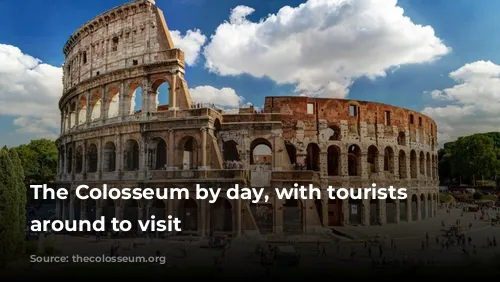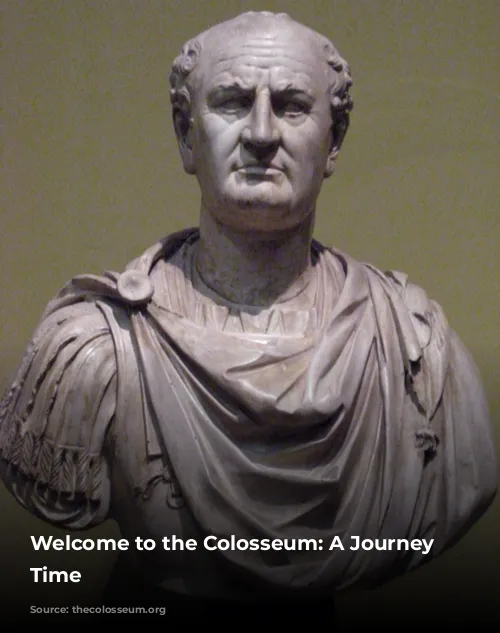The Colosseum, a majestic monument standing in the heart of Rome, has witnessed centuries of history unfold before its towering walls. This iconic amphitheater, a testament to the grandeur of the Roman Empire, has seen it all: bloody gladiator battles, epic hunts, and gruesome executions. As you prepare to explore this remarkable structure, delve into the fascinating facts that reveal its secrets and bring its past to life.

The Colosseum’s Construction: A Story of Triumph and Tragedy
In 72 AD, the construction of the Colosseum began under the reign of Emperor Vespasian, a period marked by significant rebuilding efforts following the devastating Great Fire of 64 AD. The Colosseum rose from the ashes of Nero’s opulent palace, which had been demolished to appease the Roman citizens. Though Vespasian laid the foundation, he sadly passed away before its completion. The monumental task of finishing this architectural marvel fell to his sons, Emperors Titus and Domitian, who ensured the Colosseum’s legacy lived on.
The sheer scale of this project required an immense workforce. Thousands of Jewish slaves, captured during the First Jewish-Roman War, were forced to labor under the watchful eyes of Roman engineers and craftsmen. Estimates suggest that between 60,000 and 100,000 individuals tirelessly toiled to bring this magnificent structure to life.
The Colosseum’s Size and Design: A Masterpiece of Engineering
The Colosseum’s oval shape dominates the skyline of Rome. It measures an impressive 189 meters long, 156 meters wide, and 48.5 meters tall, covering a vast 6 acres of land. Its facade boasts three levels of Doric, Ionic, and Corinthian columns, each adorned with 80 arches. These arches, numbered with Roman numerals, served as guides for spectators as they navigated the vast seating area. While the Colosseum has stood the test of time, only 31 of the original 80 arches remain intact, offering a glimpse into its past grandeur.
The Colosseum’s construction involved 100,000 cubic meters of travertine stone, meticulously quarried from the nearby town of Tivoli. Thousands of iron clamps bound these massive stones together, creating a structure that has endured for nearly two millennia.
Beneath the Colosseum: A World of Secrets
The hypogeum, a network of tunnels and chambers located beneath the arena, played a crucial role in the Colosseum’s spectacles. This underground labyrinth served as a holding area for gladiators, animals, and prisoners, all awaiting their fate in the arena. 80 vertical shafts connected the hypogeum to the arena, allowing for the swift movement of performers and beasts. Trap doors concealed within the arena floor enabled the deployment of elaborate scenery elements, creating a breathtaking spectacle for the spectators.
The Colosseum’s Legacy: A Story of Entertainment and Brutality
The Colosseum could accommodate between 50,000 and 80,000 spectators, who flocked to witness the thrilling and often brutal events that unfolded within its walls. The most iconic spectacles were the gladiator battles, where trained warriors clashed in a fierce fight for survival. The Colosseum also hosted hunts, where armed hunters faced off against wild animals, and executions, where individuals condemned to death were thrown to their fate. The Colosseum’s bloody history is marked by the estimated 400,000 deaths that occurred within its walls over the centuries.
Lions, tigers, wolves, bears, leopards, wild boar, elephants, hyenas, buffalo, hippopotamuses, crocodiles, and giraffes were all brought into the Colosseum, some for hunts, others to serve as executioners. It’s believed that millions of animals perished within the Colosseum, a horrifying testament to the Romans’ love for entertainment, no matter the cost.
The Colosseum’s Enduring Influence: A Timeless Symbol
The Colosseum’s influence extends far beyond its physical presence. It has become a symbol of the Roman Empire’s power and grandeur. Its story continues to fascinate and inspire, reminding us of the past’s complexities, the enduring power of human ingenuity, and the importance of understanding history’s lessons.
The Colosseum is more than just a monument; it’s a window into the past, a reminder of the human spirit’s capacity for both creativity and brutality. It stands as a testament to the power of human imagination, its construction a feat of engineering unmatched in its time. The Colosseum’s legacy is one of both awe and caution, a powerful reminder of the need for empathy and the dangers of unchecked power.
